Blog

Weeds in the Garden
Jennifer here with Gardening Tuesday Week 4. If we have spent any time in the soil, we know well that our gardens need to be weeded. But what exactly is a “weed”? Often we have developed disdain for these “weeds” that want to live in our garden too, but who can blame them? We provide the perfect conditions for plants to grow: fertile soil, a sunny location, and plentiful water.
While our tomatoes and peppers do need the area around them to be weeded free of competitors, it’s important to remember that these “weeds” often play an important role in the ecosystem outside of our gardens. And some of our garden plants may not be so good for native ecosystems. Check out the photos below to learn more!
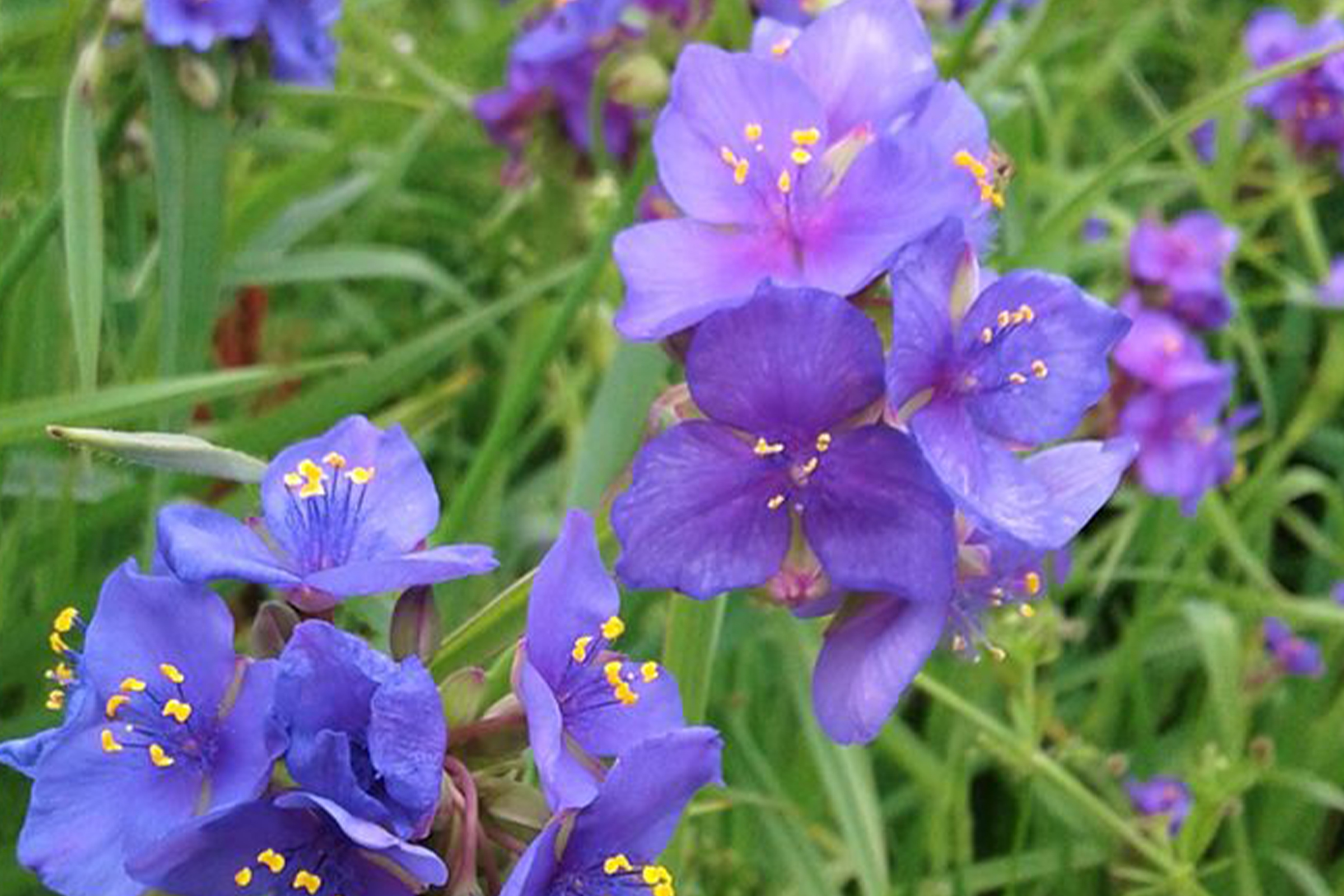
Bluejacket (Tradescantia ohiensis) is a native flower in the spiderwort family.
Native flowers like black-eyed susans, blue jacket, tall sunflower, New England aster, and milkweed can be “weedy-looking” and some may be aggressive growers in our gardens, but they are important food source for native pollinators, other insects, and seed-eating birds.
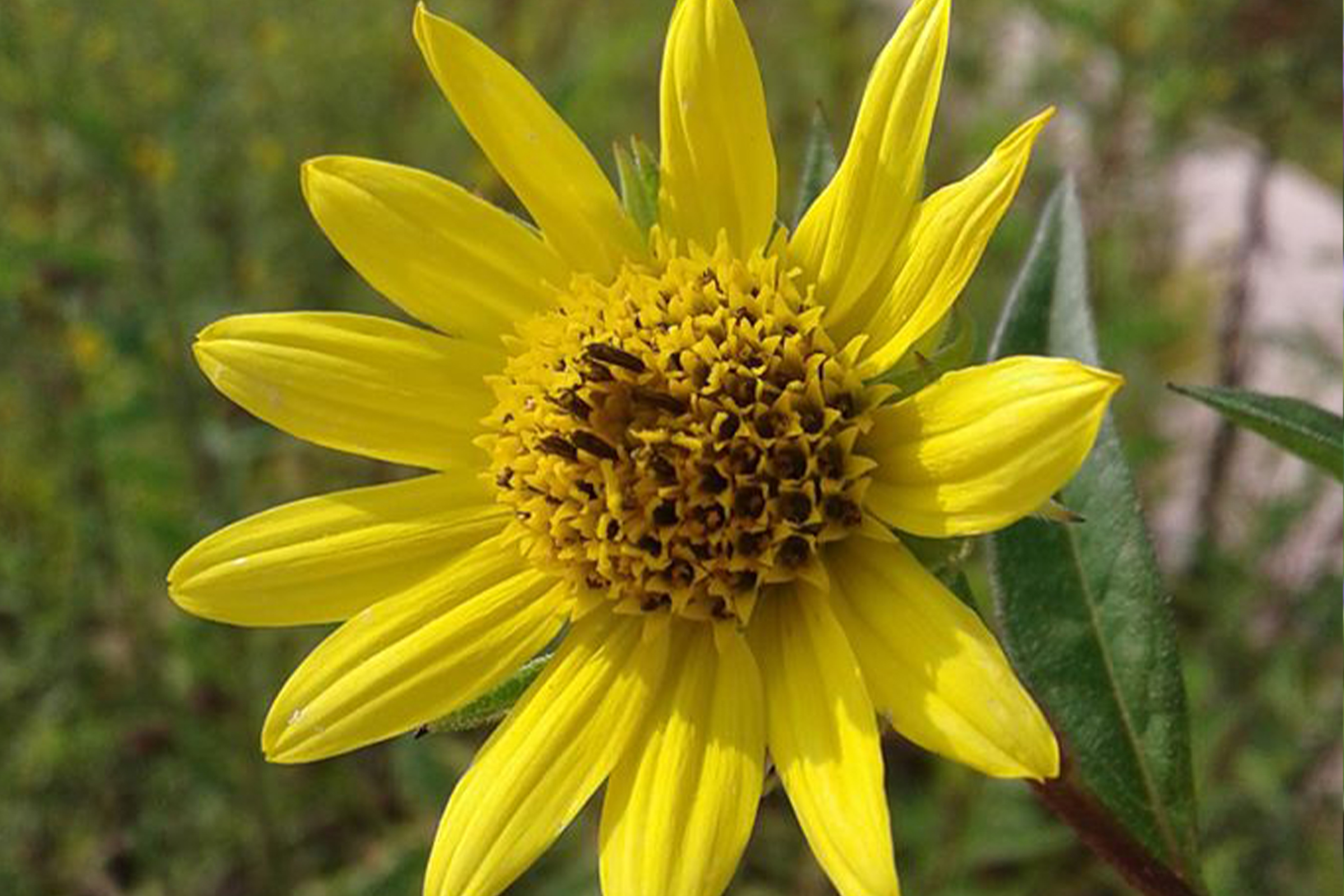
Tall sunflower (Helianthus giganteus)
Tall sunflowers may look “weedy” to some, but they produce beautiful flowers and are an important food source for seed-eating birds.
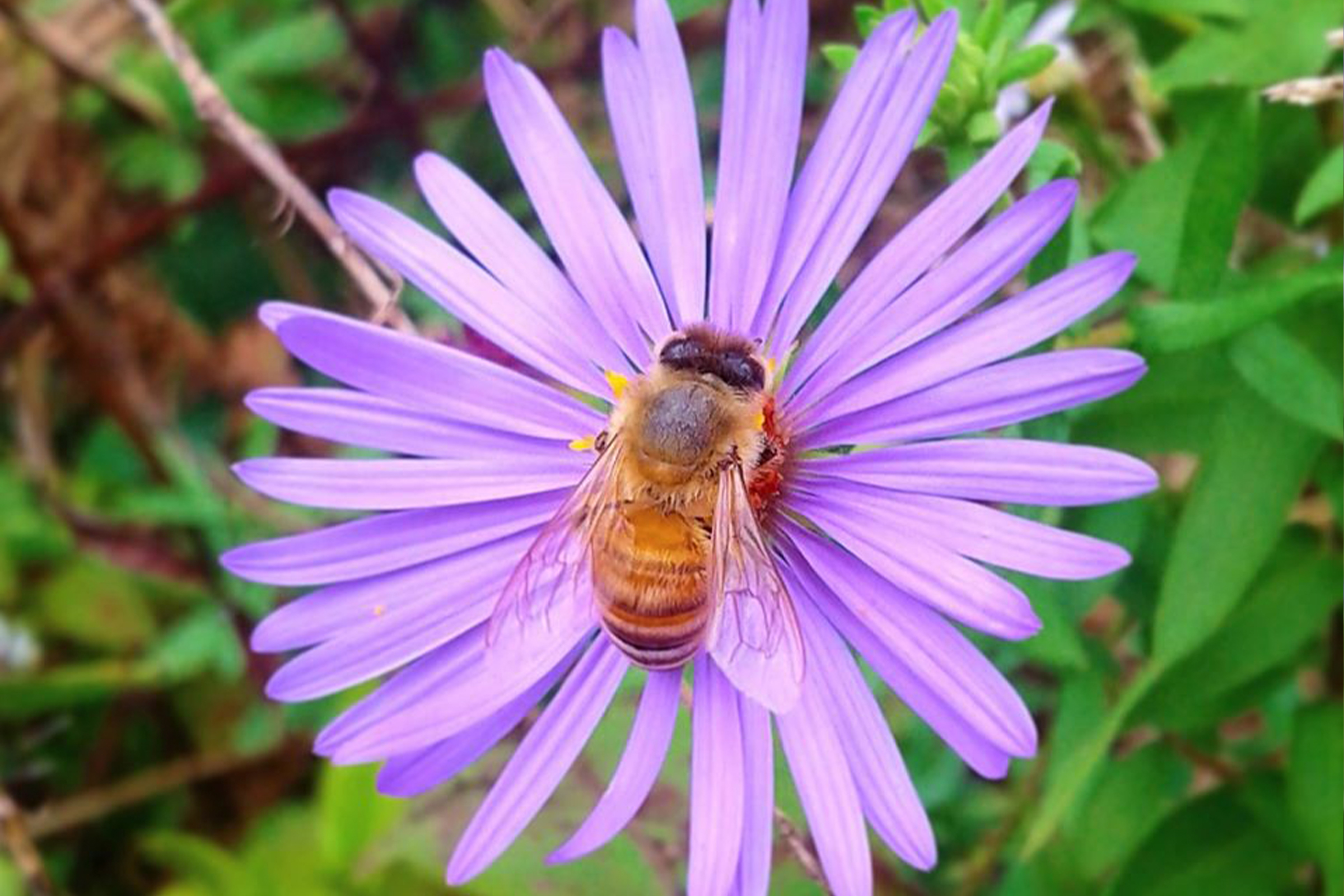
New England Aster or Michaelmas Daisy (Symphyotrichum novae-angliae)
New England Asters are very important pollinator plants. They are a nectar source for many bees and butterflies, including the Monarch butterfly. They are also the host plant for Pearl Crescent and Checkerspot butterflies. Learn more here.

Common Milkweed (Asclepias syriaca)
Plants in the milkweed family are the only host plants for the Monarch butterfly. They have a very important job to do feeding these Monarch caterpillars!
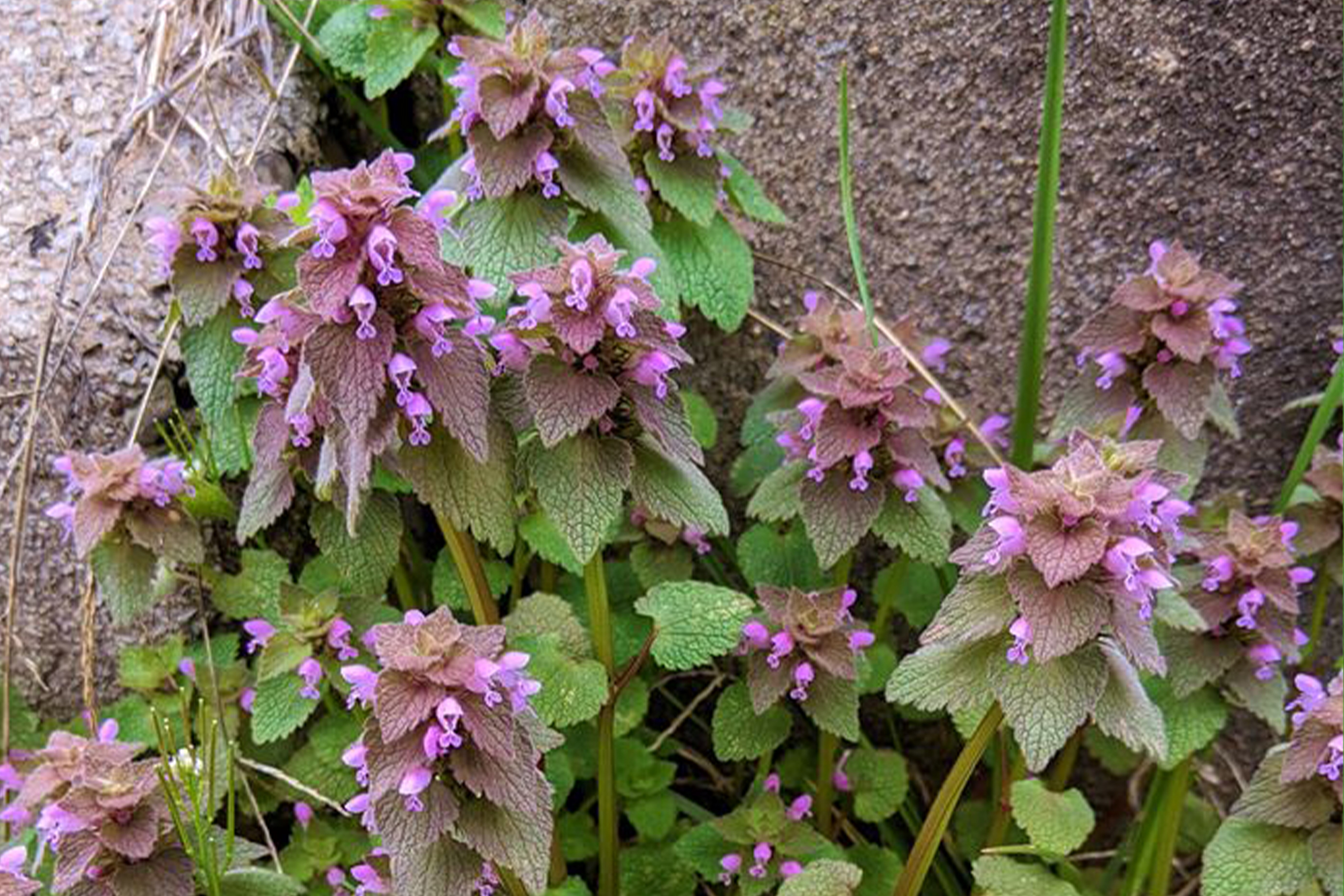
While Purple Deadnettle (Lamium purpureum)
An introduced plant from Europe, it is not considered to be a nuisance in our native landscape. Gardeners may disagree because it has a tendency to thrive in gardens. In our native ecosystem, though, purple deadnettle fills an important role: this plant provides a food source for early pollinators. Because purple deadnettle is hardy enough to bloom in April, it can feed honeybees, bumblebees, digger bees, and bee flies at a time when food sources are lacking. Learn more here.
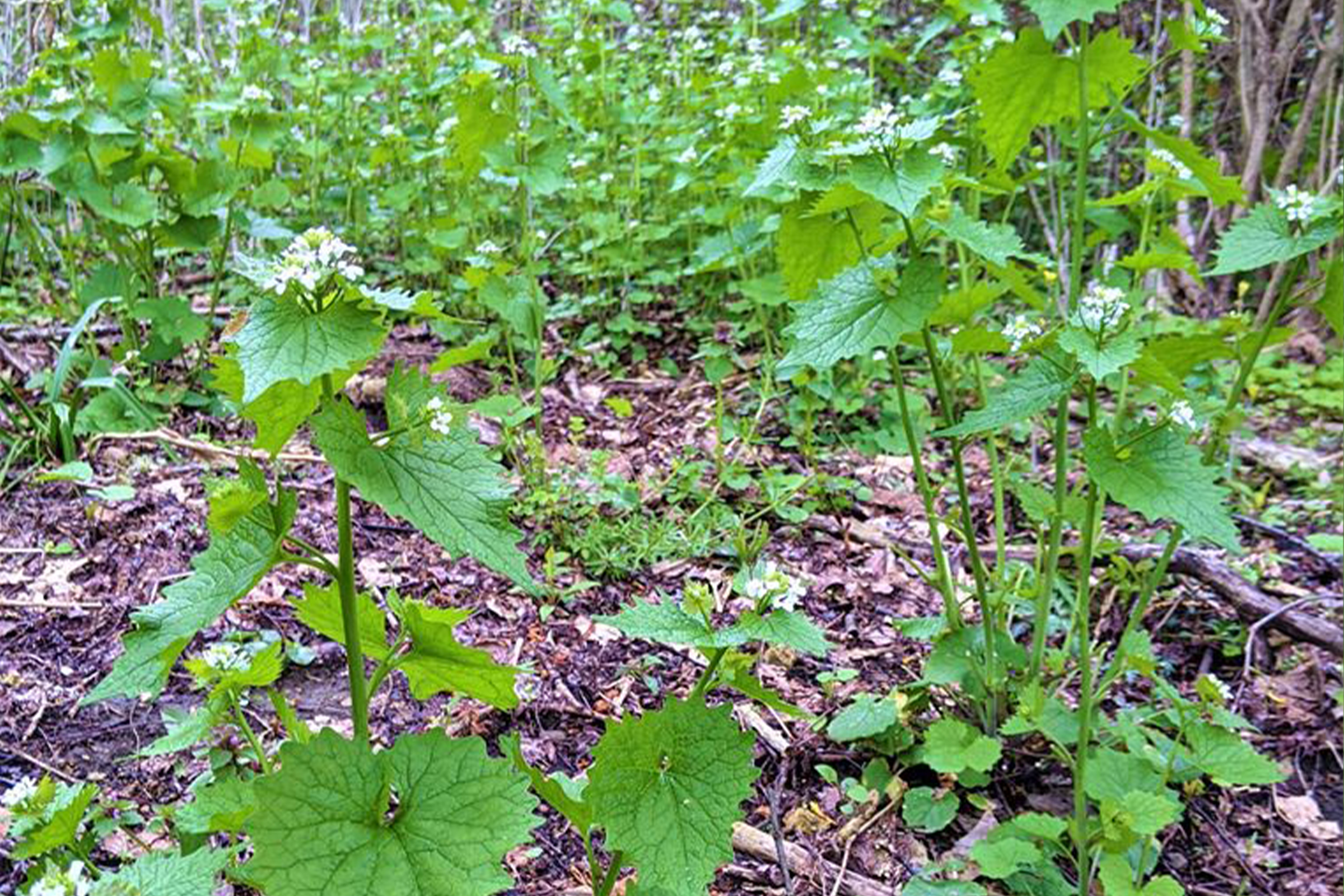
Garlic Mustard (Alliaria petiolata)
Sometimes we have garden plants that escape into the wild and become invasive! Garlic Mustard, a plant listed as invasive by the U.S. Department of Agriculture, started out as a delicious herb brought to the U.S. from Europe. Garlic mustard was first noted in NY in 1868, and has since spread through native forests. Learn more here.

Garlic Mustard Rosettes (Alliaria petiolata)
Garlic mustard is a biennial, spending its first year as clusters of leaves, or rosettes, and its second year producing a stalk and flowers.
It begins growing in March, flowers in April and May, and starts spreading seeds in May
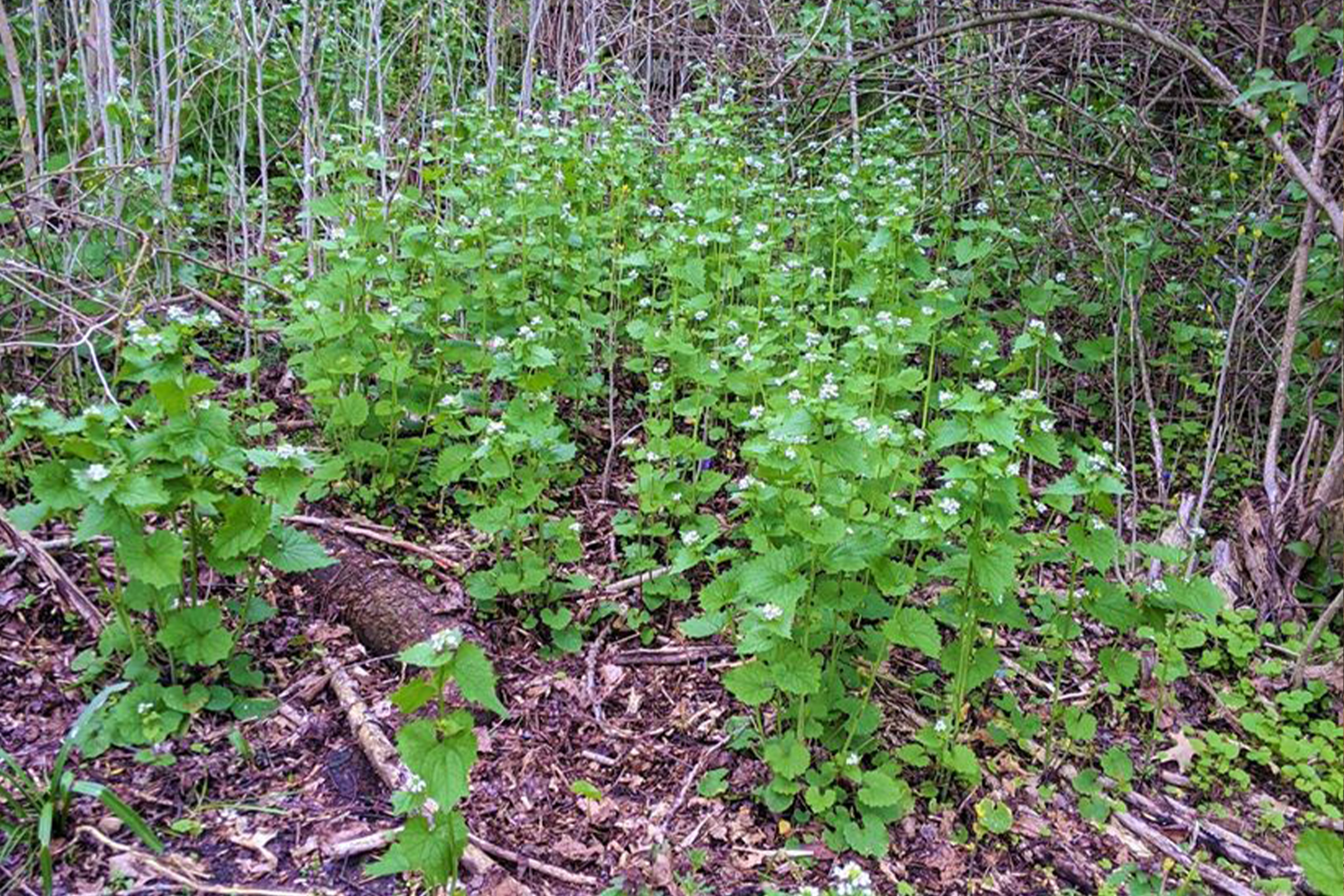
Garlic Mustard (Alliaria petiolata)
The plant is allelopathic, meaning it produces a chemical that inhibits the growth of other plants around it, allowing it to crowd out native species.
Despite not having many animal predators, garlic mustard can be a food source for humans. Garlic mustard can be used in pesto, hummus, and other dishes.
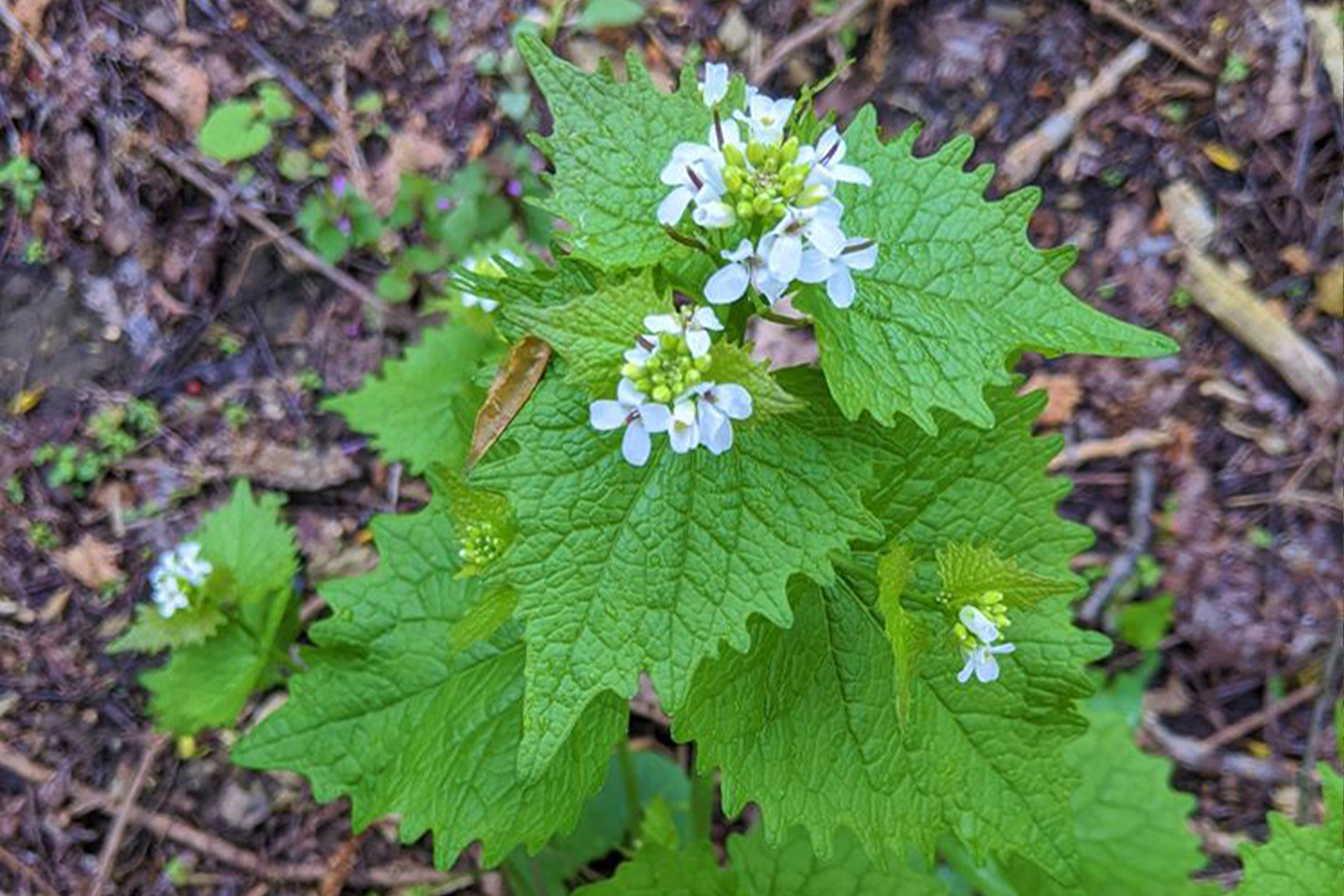
Garlic Mustard (Alliaria petiolata)
Its key identifying characteristic is leaves that smell like garlic when crushed.The recommended way to prevent garlic mustard invasion is to hand-pull it in April and May to reduce the spread of seeds. Luckily, garlic mustard is very easy to pull, so if you are looking for some eco-friendly, socially-distant exercise, head over to your local tree stand or park and start pulling! Learn more here.

